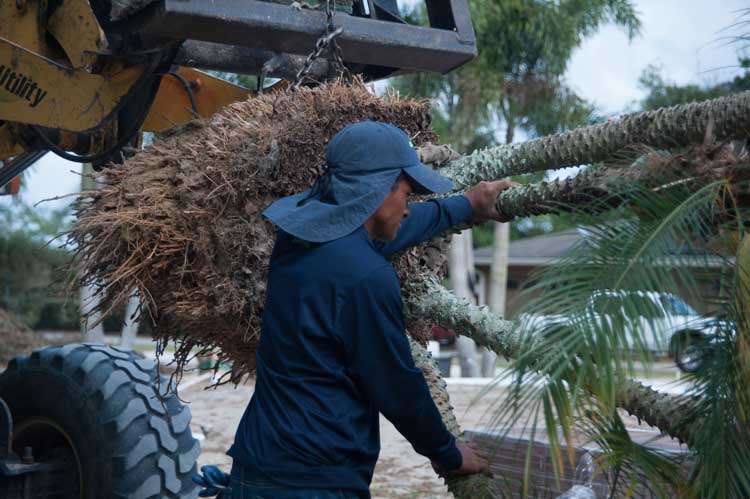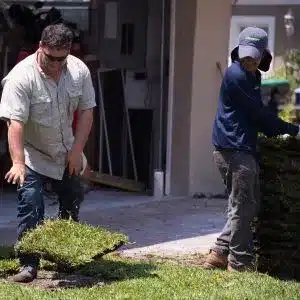Florida hurricane season: June through November – worst in September
Homeowners and business owners with landscaping have additional concerns during hurricane season. In Florida, that runs from June through the end of November, with its peak in September.
All the dangers that hurricanes bring – high winds, heavy rains, potential storm surges and floods, downed power lines – can be made worse by improper tree care. Tree limbs, coconuts, and pine cones can become projectiles. When native Florida pines, palms, or oaks topple into homes, they cause great damage.
So here’s the quick-and-dirty of getting your trees ready for hurricanes.
Prep Trees for Hurricanes
By the time a named hurricane is heading for you, it’s generally too late for comprehensive tree care. The best you can do is to make sure dead tree limbs, palm fronds, and other potential projectiles are deposited somewhere where they can’t threaten your family or your property.
Your best course of action is to address tree-related issues sometime in the summer, preferably before the most active part of hurricane season hits (in late summer and beginning fall). This is because you need time to:
Analyze and plan where you need the most help. (We discuss this a little more in detail below.) You may be able to do the work, it may make sense to get a pro to help.
Prune – no topping! – before any tropical winds happen by.
Haul away debris and pruned parts. There’s no use pruning if you can’t dispose of it properly. You’ll end up making of pile of stuff that a hurricane can use as projectiles.
Remember: Tree servicers are busy during hurricane season, both before and after tropical weather hits. If you are looking to have professionals come out to your home yard or business, it makes sense to call as soon as you know you will need them.
What is Tree Topping and Why Don’t I Want To Do It?
Tree topping (aka hat-raking, rounding, tree tipping) is the practice of cutting off the tops of trees in order to make it shorter or remove a bunch of tree limbs at once. The reason this is dangerous is because it means you’re taking off the terminal leader – those strong central limbs based off the trunk – that other limbs grow from.
When you cut off the large branches at the top of the tree, you are encouraging weaker limbs to grow in their place. When left to grow, these tree limbs grow to trunk-size but are easily snapped off by tropical winds. These tree limbs can do some real damage when they are whipped toward your house, your neighborhood power lines, cars, and so on.
The best way to avoid this is to prune trees carefully, avoiding terminal leaders. If you are not confident you can recognize the difference between lateral limbs and the leads, please call a professional. This is the long-term solution to preventing problems.
Analyze and Plan
Look for dead branches or palm fronds that could hit your roof, fascia, or windows. They’ll need to be trimmed.
All landscape elements, including decorative stones and pavers, will need to be checked. If any are loose or likely to be lifted, they need to be removed and put away.
If you have coconut palms, consider removing coconuts. Definitely remove any that have fallen.
See where power lines run through or near your property. You’ll need to address any tree limbs or structures that run near them.
Prune and Trim
Again, if you are not confident that you can do a thorough job of pruning and trimming trees without compromising a tree’s storm tolerance in the long run, hire someone to do it for you. And make sure the people you hire also haul away the debris.
After the Hurricane
Stay clear of power lines. Need to clear tree debris or droopy limbs near power lines? Don’t.
Avoid downed power lines
Avoid flooded areas
Avoid debris-laden areas, which may be hiding dangers
Don’t get ladders or tools within a car-length of power lines, either. Call your power company first, and only if you can confirm that the debris is outside of the danger area, you may approach the area carefully. If you have any doubts, call a professional tree service with line-clearing experience.




